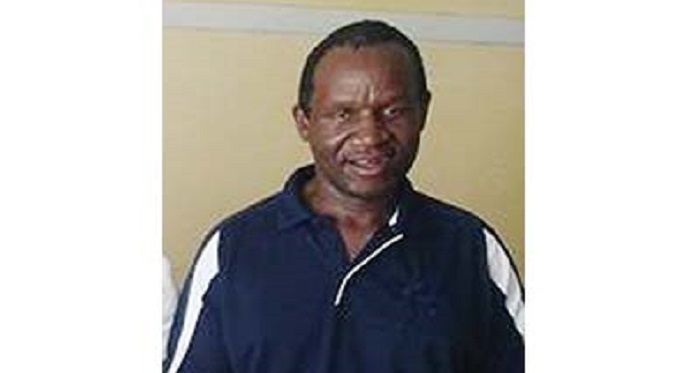An account of Rhodesia’s end days: A Kiwi narrates his participation in peacekeeping force

Pathisa Nyathi
TODAY is Heroes Day, the time when we reflect on the sacrifices of the sons and daughters of Zimbabwe who brought about independence after years of nationalist struggles which were followed by the armed struggle when the white regime proved intransigent and unwilling to surrender power to the black majority. As far back as the late 1950s, following inspiration from Ghana’s independence in 1957 under the leadership of Kwame Nkrumah, blacks in Southern Rhodesia formed the first truly national political movement under the leadership of Joshua Nkomo. It was the Southern Rhodesia African National Congress (SRANC) which had been launched on 12 September 1957 at the Mai Musodzi Hall in the Harare African Township (now Mbare).
It was a struggle that was going to turn out to be both protracted and bloody. By the year 1960, what had hitherto been pacific nationalist agitation transformed into a more militant struggle that embraced recourse to violence as a modus operandi to dislodge the racist settler regime from power. Then started a series of action-reaction events culminating in a bitter war for independence when the youth wing of the Zimbabwe African People’s Union (Zapu) left the country to undergo military training in friendly countries such as China, North Korea, Cuba, Ghana, Algeria, Egypt and later the Soviet Union.
A theatre of war had been created in which men and women emerged as heroes and heroines of that conflict emerged and are today being acknowledged and celebrated for their gallant and heroic efforts. By 1979, the war had been ramped to a point where there was no going back. Most of Rhodesia had become a war zone in which both the Zimbabwe People’s Revolutionary Army (ZPRA) and the Zimbabwe National Liberation Army (Zanla) were engaging the Rhodesian forces. Indeed, following the Commonwealth Heads of Government Meeting (CHOGM) held in Lusaka in 1979, the meeting came up with constitutional arrangements designed to arrive at the resolution of the Rhodesian constitutional lock jam.
It was at a time when ZPRA had embarked on its Turning Point Strategy where regular forces were poised to dislodge the Rhodesian government through the barrel of the gun. December 1979 had been billed as the date for the implementation of that strategy which the Western powers translated as improving the chances for the Soviet Union and her allies, in the context of the cold war, to establish a strong political and economic foothold in southern Africa. The ensuing Lancaster House Talks held in London from September of the same year, witnessed the resolution of the long-standing constitutional impasse. Ceasefire was brokered and general elections were pencilled for the following year, 1980. Zimbabwe-Rhodesia, led by Bishop Abel T Muzorewa, returned to constitutionality and, going with that, was the appointment of Lord Soames as Her Majesty the Queen’s representative. Commonwealth forces were identified and sent to supervise the cessation of hostilities. Zimbabwe was on the road to independence.
However, the thrust of this article concerns the lack of documentation of that bitter war by the protagonists themselves. We are, as a people, very weak in documentation and memorialisation of that theatre of war out of which heroes and heroines emerged.
Each year witnesses the passing of those with a record of what transpired during that war. Yes, I am aware that participants of the liberation would not and did not carry notebooks where to maintain a daily diary of events. Their situation did not permit that.
However, that could have been done soon after the war in order to build an authentic archive of the war of liberation. I here give some documentation by one of the Commonwealth force members, one Mike Subritzky from New Zealand. He was one of the odd 75 Kiwis that arrived in Salisbury aboard a C 130 Hercules personnel carrier which took off from Durban in South Africa. His account, though seriously flawed in factual matters, does give some inkling regarding the final days of the period following ceasefire. He wrote that the New Zealand government sent Kiwi soldiers to Rhodesia as part of a multi-national force to try and end the fighting between the Rhodesian government and what he terms “communist terrorists.”
It never occurred to him that the people who were fighting the Ian Smith government were guerrillas fighting to dislodge a regime that denied Africans their independence. To him the Smith regime was being opposed by what he termed communist forces that he adjudged to be based on tribal loyalties. “The Regular Army of both Zipra and Zanla were trained to a reasonable standard, and were commanded by comrades and commissars, while their guerrillas were more than thugs and bully boys with AK 47s, RPGs and landmines.” Both ideological prejudice and racial bigotry are more that palpable in his writing.
Mike went on to make the allegation that “. . . both black armies (which numbered 30 000 each) were bitter tribal enemies and had a hatred of each other dating back to dawn of time. Nkomo was a Matabele, while Mugabe was a Mashona.” Mike, as one of the Gunners, belonged to a group of 10 who left New Zealand on an a circuitous route and arrived in Salisbury at 1518hrs on 20 December 1979.
The whites at the airport, he observed, gave them fingers and thumbs down, and or spat on the ground while blacks just stood out. Mike reckoned their contingent was not popular.
It was clear, from what he observed, that there was a war. The white men, women and children carried personal weapons. There were bunks, outposts and heavy machine guns everywhere. Indeed, he made accurate observations that the white population lived in fear and their community had militarised in an effort to ward off the guerrillas who they however failed to stop on their march towards independence.
Their billet had been arranged for them at Morgan High School where they were kept in the dark about what was going on, save that they were expected to “hurry up and wait.”
The war had taken its toll and that was evident through shortages of basic commodities such as breakfast cereals, camera film, vehicle parts, and chocolate. Rhodesia had been under a tight sanctions regime for years.
It was time to move to the army barracks at Cranborne where the commander of the British Forces, John Ackland was based. The British commander immediately recognised them as New Zealanders due to the red-over-blue diamond patch that they wore behind their artillery cap badges. “Good to see Kiwis are here.” What followed were briefings relating to the location of Army camps and “communist bases.”
Mike and fellow Gunners were to constitute a contingent which included a dozen other Kiwis who were placed under the command of Major Hewitt. Their destination was a place at the Rhodesia/Botswana border. Where they were going was the Assembly Place Lima (Madlambudzi) in Bulilima-Mangwe. But before embarking on the trip to Assembly Point Lima, they had the opportunity to attend mass at a Salisbury (now Harare) church where once again, it was clear the country had not, by then, demobilised.
It was still on a war mode. The church congregation members, white of course, were carrying guns. “It was a little like a church service in a cowboy movie,” observed and wrote Mike. After the church service the New Zealand contingent proceeded to the Monomatapa Hotel, a five-star tourist facility where they celebrated Christmas Day. There were 75 of them at the hotel together with a similar number of Rhodesians.
There they came into contact with a member of the Selous Scouts who had been injured when the armoured vehicle they were travelling in was blown up. Rhodesia was still at war. The Selous Scouts arranged a gunship to come to the injured man’s rescue. While there, the Kiwis were reminded, “Remember this Kiwis, in Rhodesia — every road is a minefield, every corner’s an ambush and every Af’s a Terr.”
On the 27th of December the AP Lima-bound contingent went to a transit camp from where they were to get transport to take them to Bulawayo and finally beyond to Plumtree and AP Lima. In the company of British marines, they boarded a bus and left for Bulawayo at 07.30. They got to learn that during the day there had been contacts with fatalities. In his typical racist language, Mike reported that 19 communists had been KIA (killed in action). Three Rhodesian security forces had also been KIA. Also making up the daily statistics were 17 black civilians who had been killed.
In Bulawayo their first port of call was Brady Barracks, the headquarters for 1 Brigade.
There a British soldier informed them about a C130 bearing a white cross that had been shot up as well as a Puma helicopter that had gone up with 4 peacekeepers killed. The contingent was kitted out with weapons before setting out for AP Lima: five magazines, bandoliers of 7,62mm ball ammunition. The Rhodesian Women Army threw a party for them. Each woman carried an Uzi, VZ 25 sub-machine gun or had an automatic pistol in their handbag.
On the 28th of December they set off on the way to AP Lima and were warned to expect landmines and ambushes along the way. A Land Rover and a Rhodesian “Crocodile” provided their transport. Along the way they picked up a Liaison Officer, one Lt Colonel Albert Zikhali from ZPRA. The officer was armed with a Soviet-made AKM 65.
The apparent prejudice and racial arrogance notwithstanding, this account does render some account of the war situation and related matters at the time the peace keeping forces were being deployed during the run-up to the 1979 general elections that ushered independence.
How many from both ZPRA and Zanla, have told such stories, not only during the end days of the war of liberation but indeed throughout the war from its inception to its end? It’s never too late. If anything, it is better late than never!








Comments